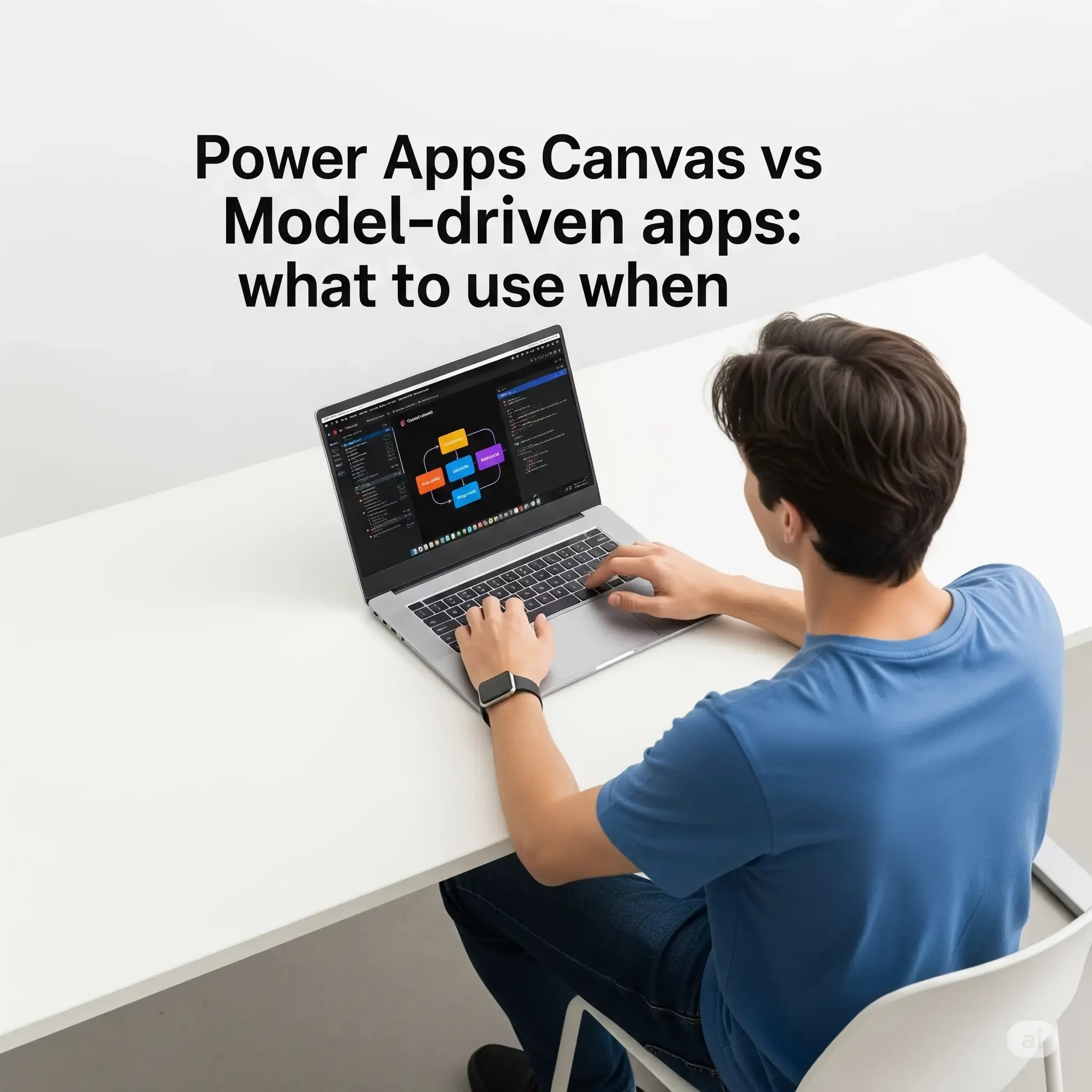Power Apps Canvas vs Model-driven apps: what to use when
Microsoft Power Apps provides two powerful mechanisms of app development Canvas Apps and Model-Driven Apps. Despite the fact that they allow building business applications through low-code and in a very quick way, they are also customized to different use cases and audiences. The right one can potentially make user experience a great experience, provide significant scalability, and facilitate great development time. The differences, strengths, and the most suitable use-cases are summarized here.
Canvas Apps: Design-and-Flexibility First
With Canvas Apps you can have that direct control in user interface as in PowerPoint slide designs. You are given a blank slate and can drag and drop information in places you want them to be. This is best suited to very customized and branded usage.
Key Features:
- UI control to the pixel: Layouts, fonts, colors and component styling to tailor to your every need.
- Flexibility of data: Since it enables connection to more than 600 data sources (SharePoint, Excel, and SQL Server, Dataverse, etc.).
- Perfect with task apps: Optimized to work with a process (e.g. a time-off request form or inventory scanner).
- Responsive layouts need manual labor: it is ideal toward the fixed screen sizes unless it is constructed responsively.
The Time to Use Canvas Apps:
- A custom user experience is highly customized.
- The app is aimed at a particular task or job, such as a mobile form or a dashboard.
- Your data is spread over different sources and not in Dataverse alone.
- You wish to design touch-sensitive mobile conditions.
Data and Process-First Model-Driven Apps
Model-Driven Apps are developed on the top of Dataverse and through the data model of the platform provide the generation of the user interface, such as forms, views, and dashboards. This technique is differentiated by design emphasis as opposed to adding design emphasis on structure and the business logic.
Key Features:
- Metadata-driven UI: The screens are designed automatically, so there is no need to create the screens manually.
- Vigorous business process flows: Inherent support to business rules, automation, and workflows.
- Responsive cross-platform: well-adjusted to the screen size and various devices.
- Enterprise-level functionality: Role-based security, auditing, rich reporting, and integration to Microsoft Dynamics 365.
Model-Driven Apps Use Situation:
- You possess complex relational data models.
- The application is business-modeled and business-processes-driven (e.g., case management, CRM systems).
- You desire scalability and healthy governance.
- You are developing internal apps based on standardized, uniform patterns of UI.
Comparing Canvas vs Model-Driven: Speedy Comparison
The Proper Attitude to Select (or to Select Both)
A hybrid solution is the best solution sometimes. In Power Platform, we can embed Canvas Apps within Model-Driven Apps to experience the flexibility of Canvas and rich process and system backplate of Model-Driven applications.
Decision Guide:
Select Canvas Apps when: You need total control over the feel and appearance of the application, or when multiple data sources are to be used.
Model-Driven Apps should be used when: Your app is based on complex business logic, standardized workflows and centralized Dataverse data.
The Fix:
Delete columns and tables that are not in use.
Filter and query at the source using query extending and query execution.
When data is only required as aggregates then use summary tables.
Final Thoughts
Both Canvas and Model-Driven Apps are versatile applications of the Microsoft Power Platform, but each of them meets the specific development requirements. With Canvas Apps, you have a level of flexibility in user experience design that you can achieve no place other than Canvas Apps, and Model-Driven Apps offer structure and scale to your data-centric, process-driven apps.
In order to get the best out of such tools, you must necessarily match the tool choice against the unique needs of your company, i.e. are you a UI customization, data complexity or enterprise-grade governance company?
You want to amplify your experience and develop effective business applications? A Power Apps training in Hyderabad is one of the right choices. A model course will allow you to learn faster, to see the real-life application scenarios, and to make as much use of Canvas as of model-driven apps using practical tutorial guidance.
